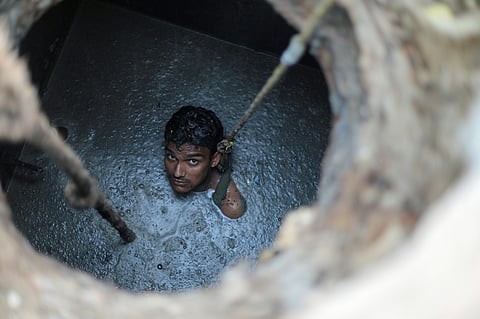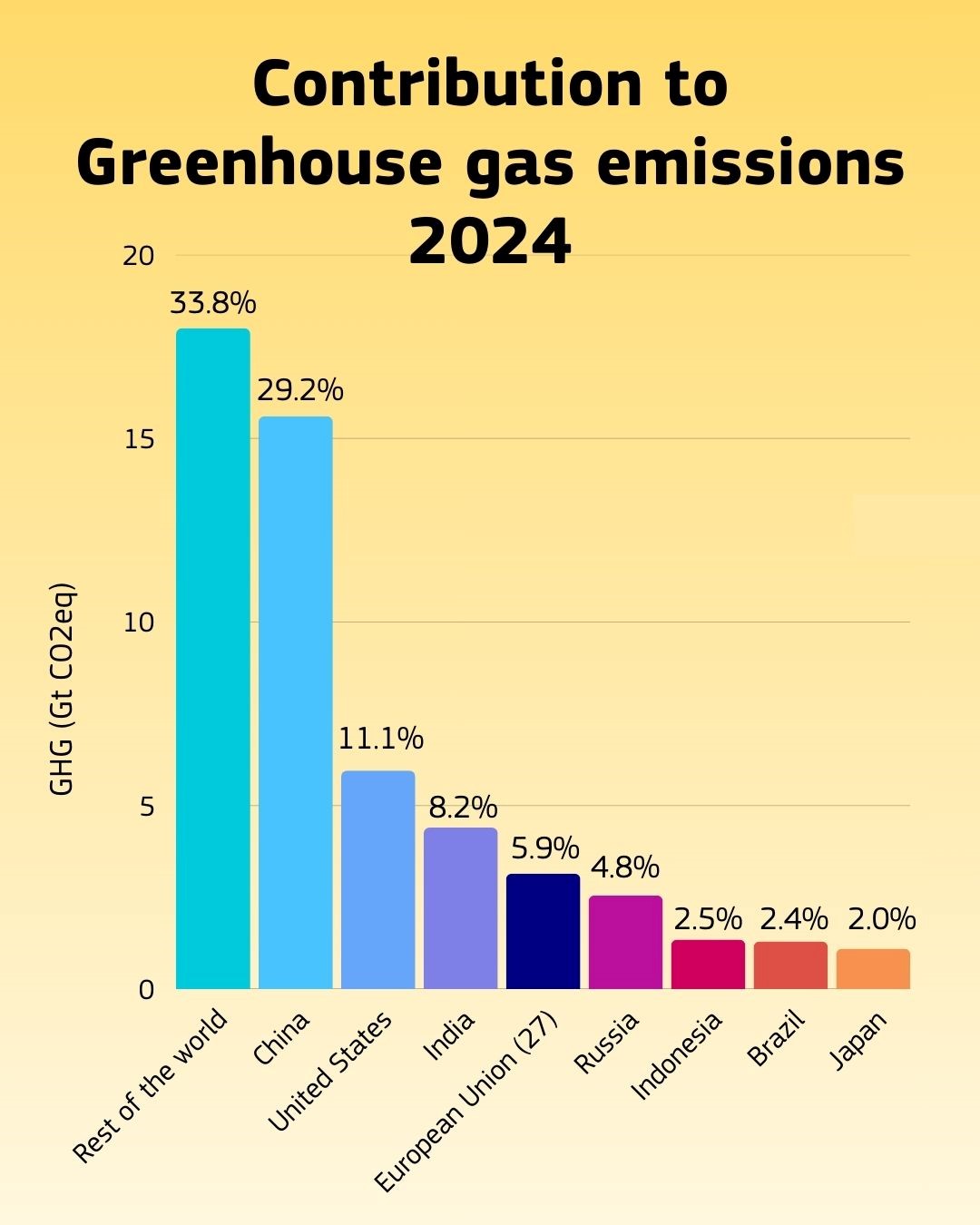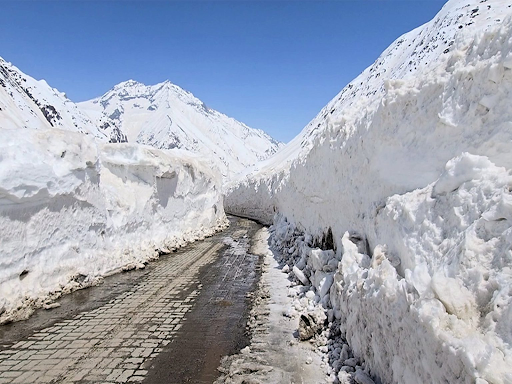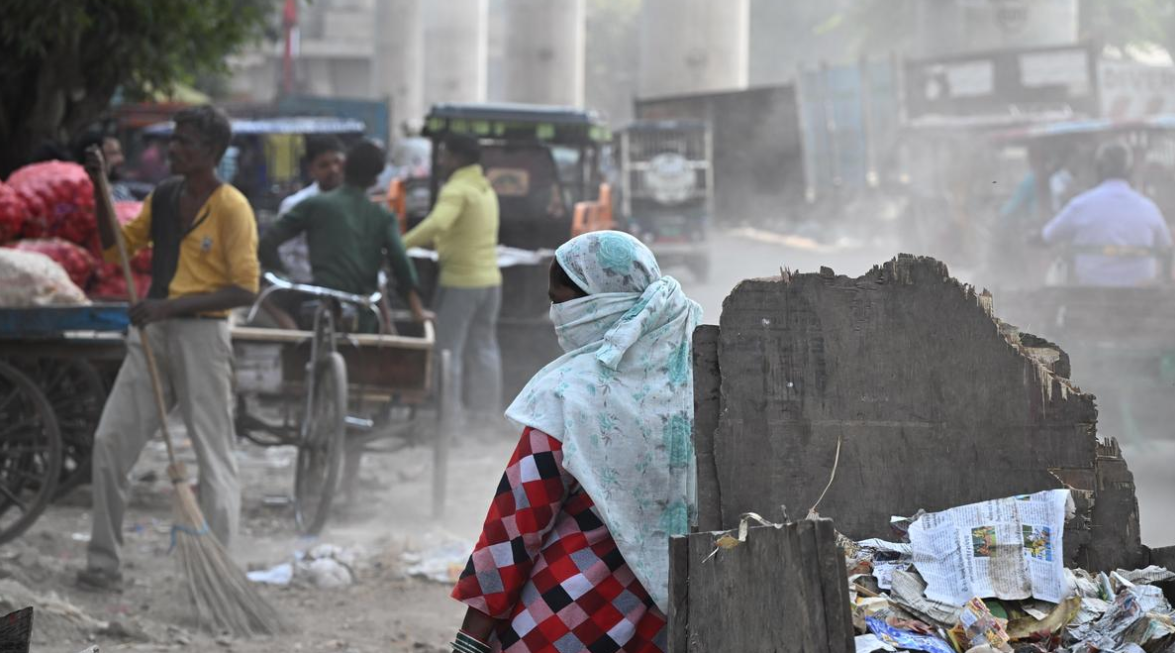Description
Copyright infringement not intended
Picture Courtesy: Down To Earth
Context:
Sanitation workers in India, mostly from marginalized Dalit communities, continue to face extreme risks while cleaning sewers, septic tanks, and waste routes. Rising temperatures and toxic gases make their work deadly, yet they receive minimal protection, support, or modified working conditions.
Current Status:
According to Heat Watch 2024 report;
- Manual scavenging, banned since 1993, continues despite laws. Between 2020 and 2024, 294 deaths were officially reported among workers cleaning sewers and septic tanks.
- Delhi remains a hotspot, with six recorded deaths in 2025, despite Supreme Court directives banning manual scavenging in major cities.
- Heat action plans in 23 states fail to account for caste-based occupational segregation, meaning marginalized workers face 150% higher heat exposure than dominant caste groups.
- 40% of urban sanitation workers lack ID documents, preventing access to welfare, healthcare, and climate resilience programs.
How climate change is affecting the health of sanitation workers in India?
- Extreme Heat and Heat Stress: Rising temperatures due to climate change amplify the heat exposure for sanitation workers who work in sewers, septic tanks, and open drains. Heatwaves increase the risk of heat exhaustion, heatstroke, dehydration, and even death.
- Exposure to Toxic Gases and Contaminants: Climate change can intensify decomposition in sewage, increasing the release of methane, hydrogen sulfide, and ammonia.
- Increased Risk of Waterborne and Vector-borne Diseases: Higher temperatures and flooding promote the growth of pathogens and breeding of mosquitoes. Workers handling sewage are at greater risk of cholera, leptospirosis, hepatitis, dengue, and malaria.
- Occupational Stress and Weakened Immunity: Continuous exposure to hazardous conditions without protective gear, coupled with climate stress, weakens immune systems.
- Amplification of Pre-existing Vulnerabilities: Sanitation workers are mostly from marginalized communities (Dalits), who already face poor healthcare access and nutritional deficiencies.
Multidimensional implications of climate change on sanitation workers:
- Health Impacts: Rising temperatures and prolonged heatwaves exacerbate occupational hazards. Workers face heatstroke, respiratory illnesses, skin infections, and long-term reduction in life expectancy due to prolonged exposure to toxic gases and sewage.
- Economic Vulnerability: Sanitation workers often earn low wages, lack formal employment benefits, and face wage cuts under privatization. Climate-induced hazards increase medical expenses and reduce productivity, trapping workers in a cycle of poverty.
- Social and Caste-Based Marginalization: Most sanitation workers belong to marginalized communities. Climate crises amplify existing caste-based discrimination, leaving them excluded from government relief, social security, and recognition in policy frameworks.
- Environmental Exposure: Workers face direct exposure to intensified climate events such as heatwaves, floods, and contaminated water sources. These conditions make their jobs more dangerous and life-threatening.
- Governance and Policy Gaps: Existing safety laws and climate action plans largely ignore sanitation workers. Insufficient PPE distribution, inadequate legal protection, and lack of mechanization leave them vulnerable to climate risks.
Challenges:
- Systemic Caste-Based Discrimination: Sanitation work is historically linked to marginalized communities, particularly Dalits. Social stigma and caste hierarchies prevent proper recognition, policy focus, and equitable resource allocation.
- Weak Enforcement of Laws: Despite laws banning manual scavenging and provisions for worker safety, enforcement remains lax. Workers continue to operate in hazardous conditions without accountability for employers.
- Limited Access to Protective Infrastructure: Personal protective equipment (PPE), mechanized sanitation systems, and medical support are insufficient. Coverage is partial, inconsistent, and often fails to reach contract or informal workers.
- Privatization and Contractual Employment: Privatization reduces wages, benefits, and safety compliance. Contract workers are especially vulnerable, as they often lack legal recognition, insurance, and access to social security schemes.
- Climate Intensification: Rising temperatures, heatwaves, and floods exacerbate existing risks. Current heat action plans and disaster mitigation strategies fail to account for caste- and occupation-based vulnerabilities.
- Lack of Data and Awareness: Many deaths and illnesses go unreported. Absence of disaggregated data on caste, occupation, and climate exposure leads to invisibility in policymaking.
Government measures:
- Prohibition of Employment as Manual Scavengers and Their Rehabilitation Act (2013): Bans manual scavenging and mandates rehabilitation of workers.
- Occupational Safety, Health and Working Conditions Code (2020): Provides some provisions for worker safety, though heat protections are limited to certain sectors.
- NAMASTE Scheme (2023): Distribution of Personal Protective Equipment (PPE) kits to sanitation workers; aimed at minimizing exposure to harmful environments.
- Odisha: Under the Garima Scheme, sanitation work that involves hazardous cleaning is officially recognised as “skilled” or “highly‑skilled” in the state’s Scheduled Employments list.
- Maharashtra: The state’s “From Manholes to Machine holes” initiative aims to mechanise sewer and septic‑tank cleanings by procuring robotic cleaning machines, reducing human exposure to hazardous conditions.
- Andhra Pradesh: The state launched the Swachh Andhra Awards to incentivise Urban Local Bodies (ULBs) for improved sanitation practices and formalise rag‑pickers via training, health insurance, and integration into waste‑management systems.
Way Forward:
- Mechanisation: Introduce robotic and mechanised sewer-cleaning to reduce human exposure.
- Job Security: Formalise employment with social security, pensions, and insurance.
- Health & Safety: Ensure full PPE coverage, health check-ups, and climate-specific safeguards.
- Legal Reform: Strengthen laws against unsafe practices and enforce penalties.
- Awareness & Inclusion: Reduce stigma, promote education, and involve workers in policymaking.
- Data & Research: Collect caste-disaggregated climate-impact data for targeted interventions.
Conclusion:
India’s sanitation workers, predominantly from marginalised caste communities, face life-threatening risks exacerbated by climate change. Rising temperatures, toxic exposure, and systemic neglect turn routine work into a slow death sentence. Despite laws banning manual scavenging and schemes like NAMASTE, gaps in enforcement, PPE provision, and social protection persist. Addressing this crisis requires mechanisation, legal accountability, health safeguards, and climate-sensitive policies that recognise caste-based vulnerabilities. Only through structural reforms and social inclusion can India protect the lives and dignity of its sanitation workforce while building resilience against climate extremes.
|
Practice Question
Q. Examine how climate change exacerbates health risks for sanitation workers in India. Discuss the multidimensional implications and suggest measures the government can adopt to protect this vulnerable workforce. (250 words)
|
Frequently Asked Questions (FAQs)
Sanitation workers include individuals involved in cleaning sewers, septic tanks, public toilets, and waste collection. A significant portion belong to marginalized communities, especially Dalits.
Rising temperatures and extreme weather events increase exposure to heat, toxic gases, and floods. This leads to higher incidences of heatstroke, respiratory diseases, skin infections, and other occupational hazards.
Some protections exist under the Occupational Safety, Health and Working Conditions Code (2020) and the Building and Other Construction Workers Act (1996), but these largely ignore heat-related risks and caste-based occupational vulnerabilities.











